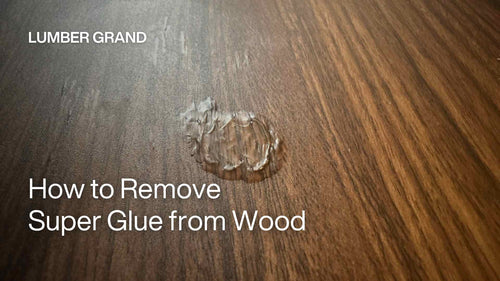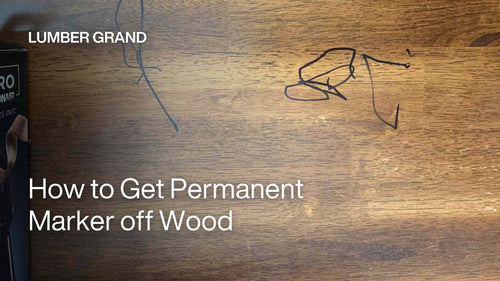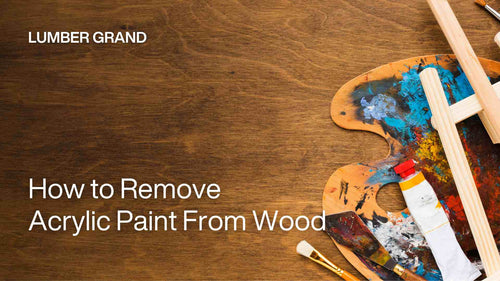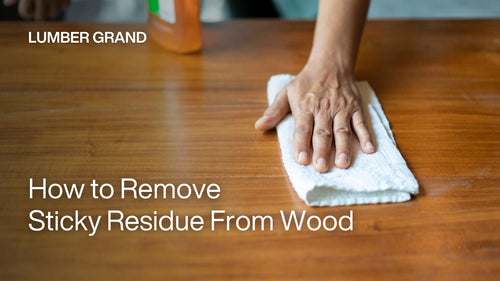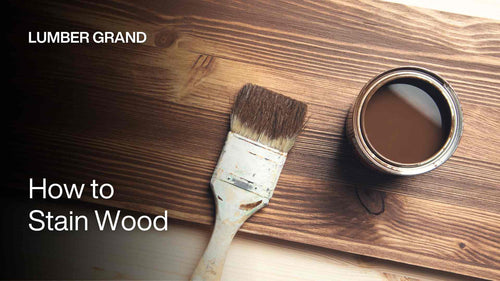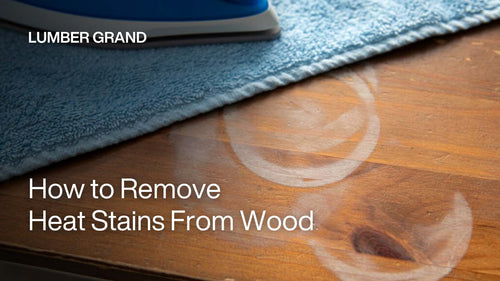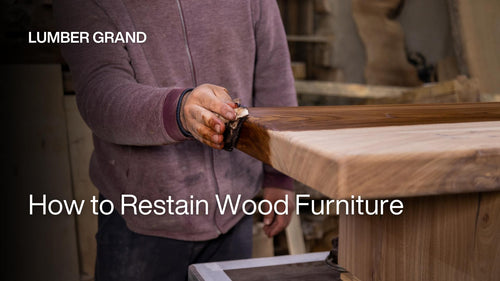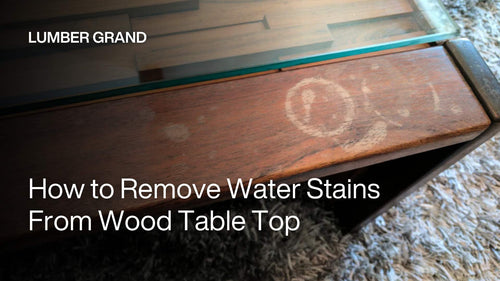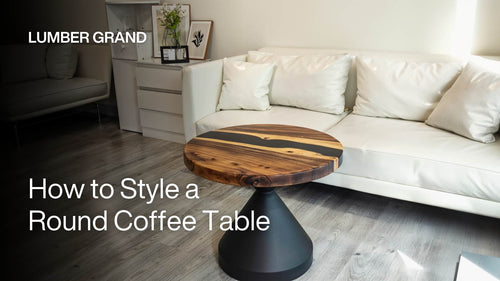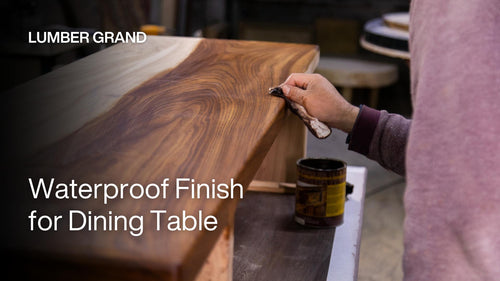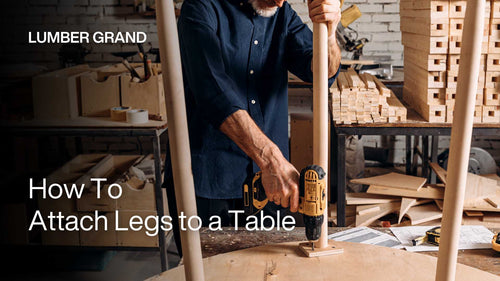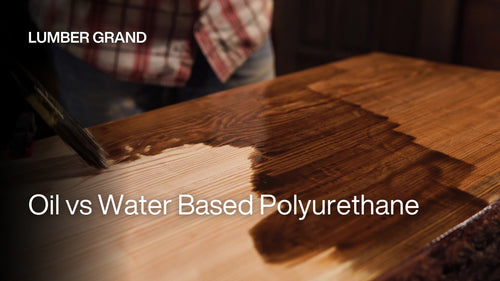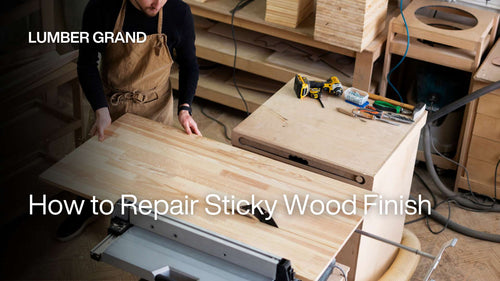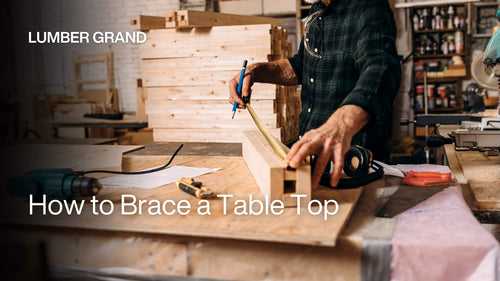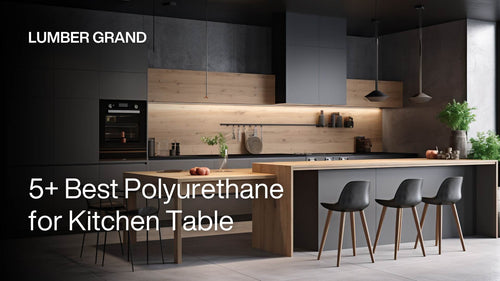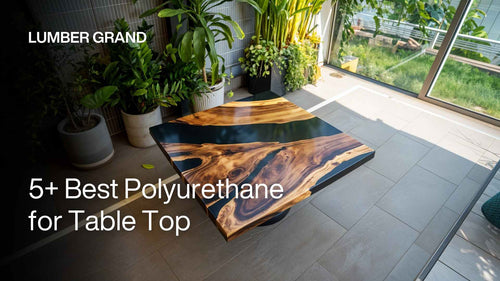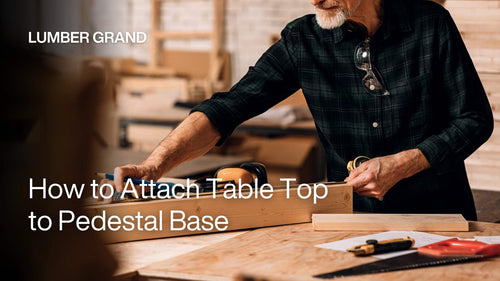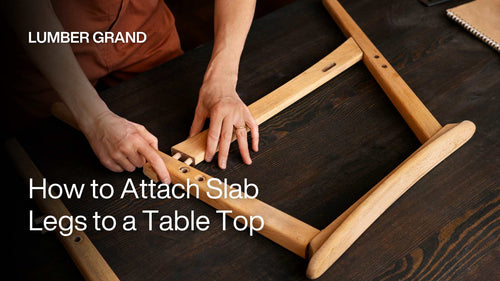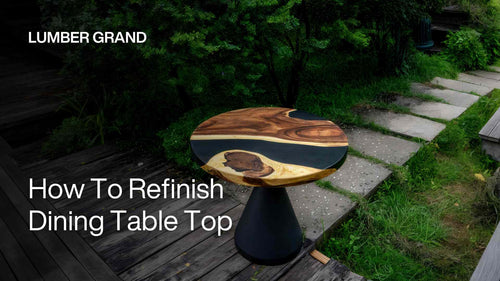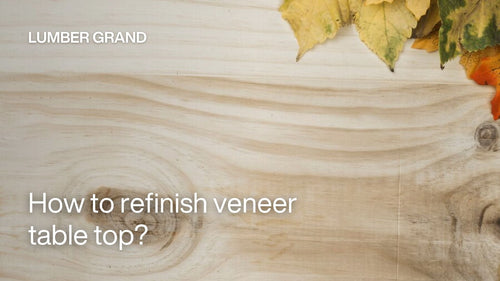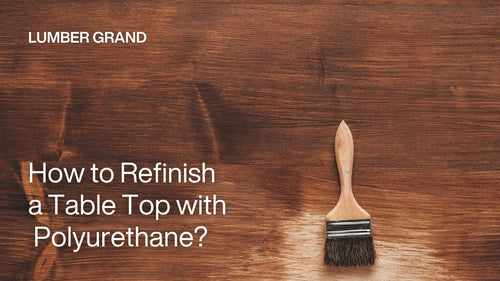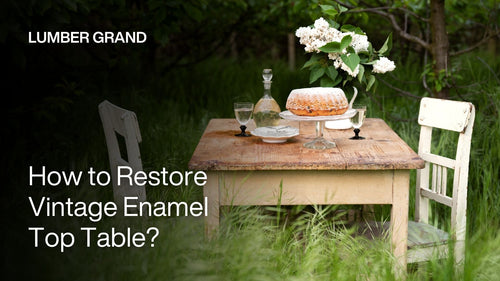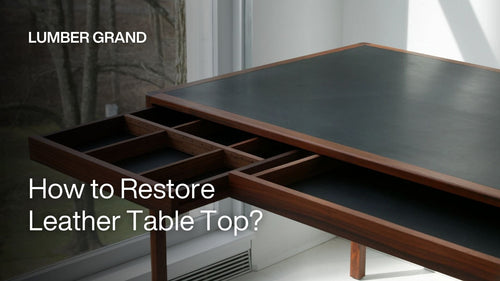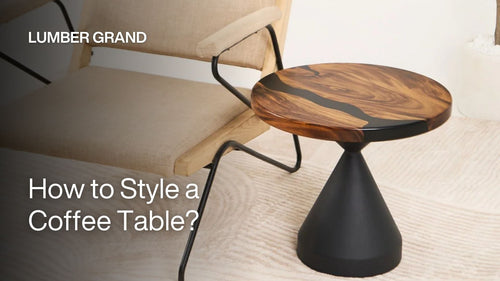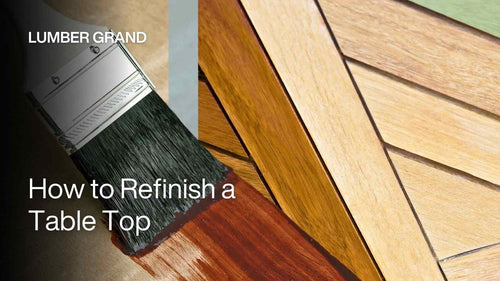We will learn how to make an epoxy river table step by step with many useful tips to create the perfect centerpiece right at home. The epoxy river table has a strong appeal with its eye-catching design and excellent durability. The sturdy epoxy layer helps protect wood from water, temperature and other damaging elements, prolonging furniture life for many years.
What Is Epoxy River Table? Why Choose It?
The epoxy river table is designed from two main components: natural wood and epoxy resin. The wood is cut in a special way to create a gap between the two pieces, then epoxy is poured into this gap to create the shape of a winding river.
The river epoxy dining table is popular for 3 main reasons:
-
Luxurious aesthetics, each table is a unique work of art that cannot be copied.
-
High durability, absolute water resistance and good bearing capacity to prevent termites and moisture.
-
Possessing a variety of colors, shapes and sizes such as blue, black, yellow or glow-in-the-dark effects.
 Epoxy tables are a combination of natural wood and epoxy resin
Epoxy tables are a combination of natural wood and epoxy resin
Photo: Lumber Grand
Shop now: Round Epoxy Dining Table 29 Inches
How to Make an Epoxy River Table - A Detailed Guide
If you know how to make an epoxy river table, you will understand the meticulousness and refinement in each product. If you do not know, let's learn the details of each step, careful preparation will help you save time in the process of creating the product.
1. Step 1: Prepare Tools and Materials
Before starting to make an epoxy river table, you need to prepare the following materials and tools:
-
Natural wood: ideally a solid wood slab about 5-7cm thick.
-
Transparent epoxy resin: specialized for casting table tops.
-
Epoxy colorant: blue, turquoise or transparent for river effects.
-
Mold: MDF or melamine coated with silicone.
-
Measuring and mixing tools: measuring cups, mixing sticks, electronic scales.
-
Grinder, sander and sandpaper from coarse to fine.
-
Heat gun or blowtorch.
-
99% IPA alcohol to clean the surface.
-
Finishing oil: polyurethane varnish or wood varnish.
-
Protective equipment: gloves, goggles, masks.
 Prepare materials and tools before making epoxy table epoxy
Prepare materials and tools before making epoxy table epoxy
Photo: ©RBJpix on Canva.com
2. Step 2: Prepare the Wood
The types of wood that professional wood workers often use to make epoxy tables today are Walnut, Oak, Maple, and Mahogany.
After choosing the right type of wood, we proceed to do the following preparation steps for how to make a river table with epoxy:
-
Dry the wood completely to 6-8% humidity to avoid shrinkage after finishing.
-
Cut the wood to the desired size, keep a natural contour for the "river" part
-
Clean the wood surface, remove bark, debris and lightly sand.
-
Treat the wood with 99% IPA alcohol to remove natural oils that can affect the adhesion of epoxy.
-
Use clamps to fix the position of the wood pieces to avoid displacement when pouring epoxy.
 Prepare wood to make a table
Prepare wood to make a table
Photo: ©TITUS GROUP on Canva.com
3. Step 3: Build a Mold
The mold is usually made from MDF or melamine board with a smooth surface. The mold should be about 2-3cm larger than the table top on each side to make it easier to remove the wood epoxy end table has cured.
First, make the bottom and edges under the mold, then use screws to secure wood panels. Next, apply a layer of silicone with a seam of mold to prevent the epoxy from leaking. The silicone should be smoothed with soap to help improve its sealing ability. Once the mold is complete, place the prepared wood in place and check for any gaps between the wood and the mold walls. If there are any, seal them with silicone.
If you notice any imperfections or damage later on, it's helpful to know how to repair an epoxy table top to maintain its flawless finish. This step is especially important when working on how to make an epoxy river table to ensure a clean and professional result.
 Make mold before pouring epoxy
Make mold before pouring epoxy
Photo:©ภาพของNoppakhoon Srikoolna on Canva.com
4. Step 4: Epoxy Mixing
The epoxy is usually made of two parts: one base resin and a hardener. To measure the exact ratio, you have to use a digital scale. The mixture ratio should follow the manufacturer's instructions (usually 1:1 or 2:1).
Mix the epoxy for 3-5 minutes with a clean mixture stick, stirring slowly to avoid making air bubbles. If you’re working on your epoxy river table DIY, you can add color to the epoxy to create a river effect. Blue, turquoise, and jade are the most commonly used colors to create a natural river experience.
After mixing well, allow the epoxy to rest for about 5 minutes so that large air bubbles can get up on the surface and avoid it before inserting.
 Mix the epoxy according to the manufacturer's ratio
Mix the epoxy according to the manufacturer's ratio
Photo: ©samiylenko on Canva.com
5. Step 5: Epoxy Pouring
One crucial aspect of how to make an epoxy river table is the layering technique. Instead of pouring all the epoxy at once, divide it into several thin layers:
-
Pour a thin layer of epoxy as a base layer and let it partially cure
-
Pour a second layer of color to create a realistic river effect
-
Pour each subsequent layer until you reach the desired thickness
Note: Each time you pour, use a heat gun or blowtorch at a distance of 15-20cm, moving continuously on the epoxy surface to remove air bubbles. But avoid torching for too long because it can burn. If you want to create a wave effect or color gradient, you can use a mixing stick to gently stir the epoxy in a swirling motion before it starts to harden.
 Slowly pour epoxy into thin layers
Slowly pour epoxy into thin layers
Photo: ©sandsun on Canva.com
6. Step 6: Wait for Curing
During the epoxy curing process, check regularly for new air bubbles and deal with them promptly with a blowtorch. If you see epoxy leaking out of the mold, wipe it off immediately, as it will be difficult to clean once it dries. If you're unsure of the process, learning how to epoxy a table top properly can help you avoid such issues and ensure a smooth, professional finish.
The epoxy will initially cure in about 24 hours, but it takes 72 hours to fully cure. The ideal conditions for epoxy to cure best are:
-
A stable room temperature of about 70-75°F
-
Low humidity, below 50%
-
No dust or flying insects
-
No strong vibrations or movements
 Wait for the epoxy to dry
Wait for the epoxy to dry
Photo: ©SaevichMikalai on Canva.com
7. Step 7: Sanding and Polishing
After the epoxy has healed, start sanding and polishing:
-
First, use the thick sanding (80-120 grit) to thin the initial surface and remove excess epoxy.
-
Use a thinner sandpaper (150-220) to soften the finished surface.
-
Use Superfine sandpaper (320-400-600) to sand again to ensure a smooth surface before polishing.
After sanding, you need to apply a finish layer to the table surface. Polyurethane oil or wooden varnish are popular choices because they provide additional protection and increase the color durability of the table.
If you're wondering how to build an epoxy river table, applying 2-3 thin coats of finish is essential. Lightly sand between the coats with 600-grit sandpaper for a smooth surface.
 Grinding and polishing table top
Grinding and polishing table top
Photo: ©Stipe Perkovic on Canva.com
8. Step 8: Attach the Legs
When installing the table legs, you should use types with a metal plate to distribute pressure evenly on the table top. Drill screw holes from the bottom of the table but do not penetrate the top. The screw length should be at least 1cm shorter than the thickness of the table top to avoid puncture.
Fix the table legs with specialized screws and check the firmness before use. After installation, check the balance of the table and adjust if necessary.
 Installing the table legs
Installing the table legs
Photo: Lumber Grand
Shop now: Round Epoxy Resin End Table 15 Inches
Perfect round epoxy tables - get yours!
Tips to Create the Perfect DIY Epoxy River Table
During the process of how to make an epoxy river table, errors such as air bubbles or phenomena such as yellowing may appear, or you need to be more creative. You can apply the following 5 tips to get a more durable and beautiful product:
-
Remove air bubbles: Place the mold in a homemade vacuum chamber by placing a large plastic sheet over it and sucking out the air with a vacuum cleaner.
-
Yellowing epoxy phenomenon: Choose high-quality epoxy with UV protection technology. Some brands include Stone Coat Epoxy Kit, System Three General Epoxy, Alumilite Quick Coat Epoxy, etc...
-
Create depth for the river effect: Pour epoxy in many layers with different color shades, from dark at the bottom to light at the top. You can mix colors like blue to create an epoxy waterfall table.
-
Increase the artistry: You can combine materials such as small pebbles, seashells, colored sand or glitter powder into the epoxy.
-
Integrate LED lights: To create a unique lighting effect, place LED strips at the bottom of the mold before pouring epoxy.
FAQs About DIY Epoxy River Table
1. Is Building a DIY Epoxy River Table Easy for Beginners?
Making an epoxy river table can be tricky with molding, mixing the epoxy in the right proportions, and removing air bubbles. But if you get through the process of careful reading of the steps and do a mini-project fairly small in scale, like a tray or cutting board, it will set you off on a course to mastering the techniques over time.
2. How Much Does It Cost to Make an Epoxy Table?
The cost to make an epoxy table can be estimated to be around $2000-$7500 depending on its size and type of wood, amount of epoxy required, and labor involved; custom designs can cost upwards of $25000.
3. What Type of Epoxy Is Used for River Tables?
Epoxy for river tables must meet the following criteria:
-
High transparency and no yellowing over time
-
Suitable hardness (Shore D 80+)
-
Good UV resistance
-
Suitable curing time (not too fast or too slow)
Some types of epoxy:
-
Superclear Liquid Glass Deep Pour Epoxy
-
UltraClear Deep Pour Epoxy
-
GlassCast 50
-
WiseBond Deep Pour Epoxy
-
CHILL ICE 1, CHILL ICE 2 TECHNO CAST™ Crystal Clear Epoxy Resins
-
MAS Epoxies Deep Pour Epoxy System
4. Is an Epoxy River Table Durable?
River epoxy tables are very durable if made properly. The epoxy layer is highly durable, scratch resistant and completely waterproof. With proper maintenance, river epoxy tables can last for 10-15 years without significant deterioration.
5. How Long Does It Take To Complete an Epoxy River Table?
The total time to complete a river epoxy table usually lasts from 7-10 days, including:
-
Preparing wood and drying: 2-3 days
-
Making mold: 1 day
-
Pouring epoxy: 1-2 days (if pouring multiple layers)
-
Time for epoxy to fully cure: 3-5 days
-
Grinding and polishing: 1-2 days
-
Applying finishing coat and installing table legs: 1 day
If you want to refer to the best-selling epoxy river table model, you can refer to the website: https://lumbergrand.com/
In this article, Lumber Grand has answered the question of how to make an epoxy river table. Making an epoxy river table requires patience and meticulousness, but the final result is definitely worth the effort. No two epoxy river tables are exactly the same, because each piece of wood, each epoxy line has its own unique characteristics.









